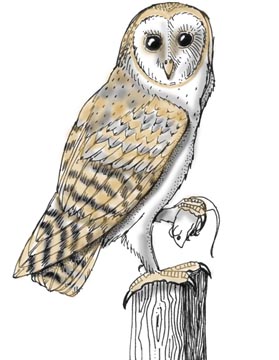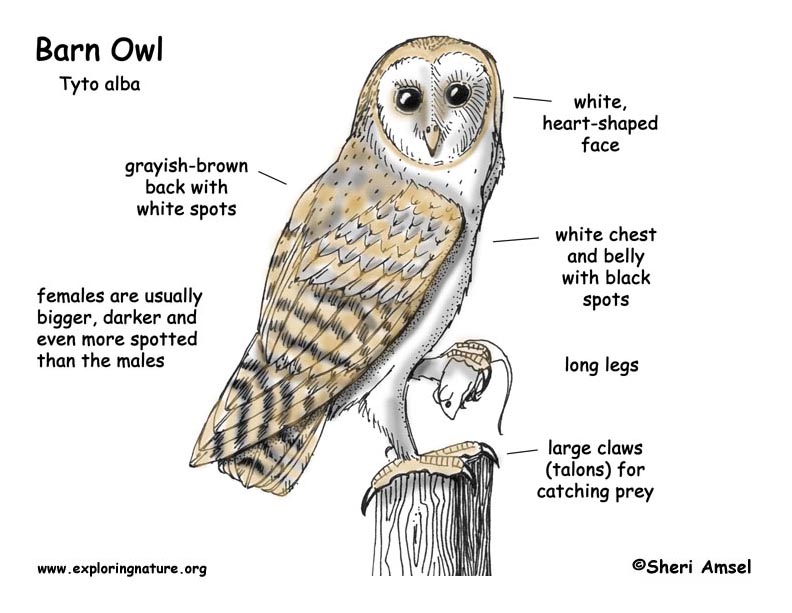

They are found from the southern tip of British Columbia, Canada through the northern U.S. south into Central and South America and even the Caribbean. They are also found in Africa, Europe, Southeast Asia, and Australia.
They are found in grasslands, deserts, marshes, and farm fields. They are found in the most places on earth (all continents except Antarctica).
They are medium sized owls, reaching 16 inches tall. They have white faces, chests and bellies with black spots. Their backs are grayish-brown with white spots. They have a heart-shaped face and long legs. Females and males look alike, though the females are usually bigger and even more spotted and darker than the males.
They hunt at night (nocturnal) with their great night eye sight (vision) and hearing. They fly low over the ground to look for prey.
They eat small mammals.
They nest in hollow trees, cliff holes, barns or other out buildings, and nest boxes. Their nests are cup-shaped and made from the scraps they spit up after eating prey (owl pellets). Females lay 3-9 white eggs.
Kingdom: Animalia
Phylum: Chordata
Subphylum: Vetebrata
Class: Aves
Order: Strigiformes
Family: Tytonidae
Subfamily: Tytoninae
Genus: Tyto
Species: T. alba
When you research information you must cite the reference. Citing for websites is different from citing from books, magazines and periodicals. The style of citing shown here is from the MLA Style Citations (Modern Language Association).
When citing a WEBSITE the general format is as follows.
Author Last Name, First Name(s). "Title: Subtitle of Part of Web Page, if appropriate." Title: Subtitle: Section of Page if appropriate. Sponsoring/Publishing Agency, If Given. Additional significant descriptive information. Date of Electronic Publication or other Date, such as Last Updated. Day Month Year of access < URL >.
Amsel, Sheri. "Owl (Barn)" Exploring Nature Educational Resource ©2005-2024. December 13, 2024
< http://www.exploringnature.org/db/view/Owl-Barn >

